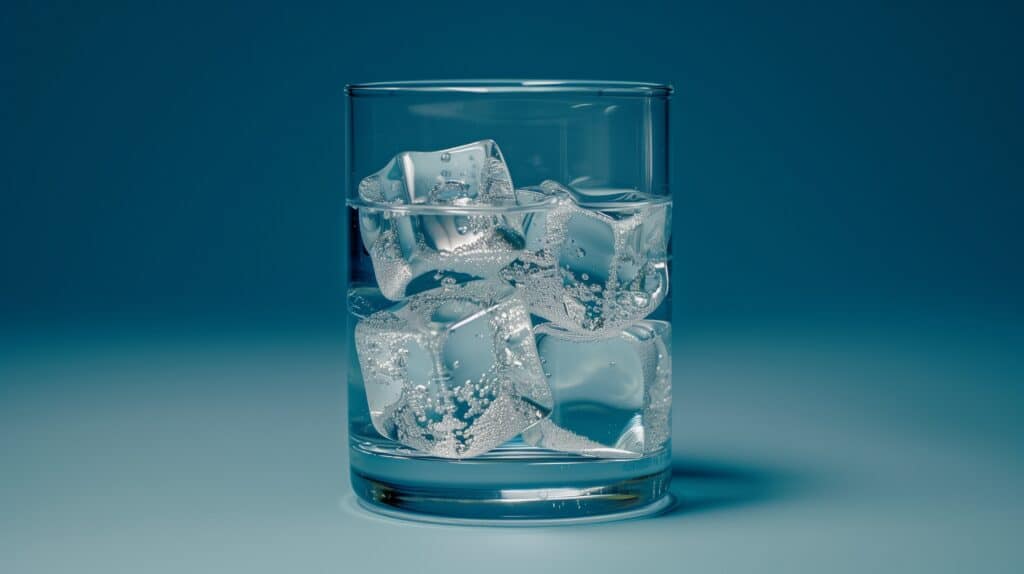
I am an ice specialist! If you want to know where to buy ice chunks, ice cubes, or chewable ice, I am the person to ask. I can tell you which stores have the softest ice and how much it costs. How did I become such an expert?
In 2012, I was diagnosed with iron deficiency anemia. That meant that I could not absorb iron through ingestion. Side effects of this condition include fatigue, shortness of breath, racing heart, low hemoglobin levels, foggy thinking, pale skin, and pica (which manifests in chewing ice).
My family commented that I had been chewing enough ice to build an igloo, and I started paying attention. I was chewing through eight pounds of ice per week. What really got my attention was when I was walking into a building with three flights of stairs. For a few years, I had traveled those three flights multiple times daily instead of taking the elevator. Lately, it had become more difficult, and my heart rate sped every time I walked up them. On this particular morning, I looked at the stairway and elevator doors and thought, “I just can’t today.” I took the elevator up one level. I decided it was time to see the doctor.
When I was driving to work the next week, my doctor called me and told me to go to the nearest emergency room. I told her I was on my way to work and couldn’t go now. She told me that if I didn’t get blood immediately, I could have a heart attack. She told me my hemoglobin level was at 5.4. It is supposed to be at 11-16. Needless to say, that made me take the next exit, and I spent my birthday in the ED, where I was given two units of blood.
As I learned more about what iron deficiency anemia meant for me, I discovered that the body needs iron to produce red blood cells, which carry oxygen around the body. Initially, anemia can be mild, so you don’t notice. As you get more deficient in iron, the signs and symptoms intensify.
According to The Mayo Clinic, complications for adults can include rapid and irregular heartbeat resulting in an enlarged heart. That is a grave issue, and I knew exactly what it felt like. It is scary to think how close I was to having irreparable damage.
There are two types of iron deficiencies: absolute and functional. I had an absolute deficiency, meaning that I had zero stores of ferritin, a protein that stores iron in cells. If I had a bleed, I would have died of heart failure. According to the Mount Sinai Health Library (2024) Ferritin Blood Test, normal blood ferritin levels are ideally between 13 and 150 ng/ml.
I had been suffering from anemia for many years, and while I knew the cause, none of the doctors I saw had a “fix” for it except for occasional blood tests and iron infusions. Then, I met a Hematologist specialist at the VA who patiently worked on my case and determined that the other doctors were focusing on the wrong thing. They were focused on the hemoglobin level instead of the ferritin level.
According to (Tawfik YMK, Billingsley H, Bhatt AS, et al.) Absolute and Functional Iron Deficiency in the US, 2017-2020. JAMA Network Open, in 2024, approximately 1 in 4 people, or 26% of adults in the U.S., suffer from anemia.
My solution was iron infusions since I could not absorb iron through food and supplements. I must have them twice yearly to ensure enough ferritin and iron is in my system.
This is not an insignificant problem. As you heard in my story, it can lead to scary signs, symptoms, and consequences. This deficiency is relatively easy to fix with a medical team’s proper care and attention.
Seeing a medical professional for an annual blood workup is critical to your health. Getting the proper iron and ferritin levels can increase your energy, save your heart, help you to think clearly, and prevent your loved ones from making comments like, “I could bring an auger to get through the ice for fishing, or you could just eat through it.”
Written By:Shannon Zellmann, NREMT

